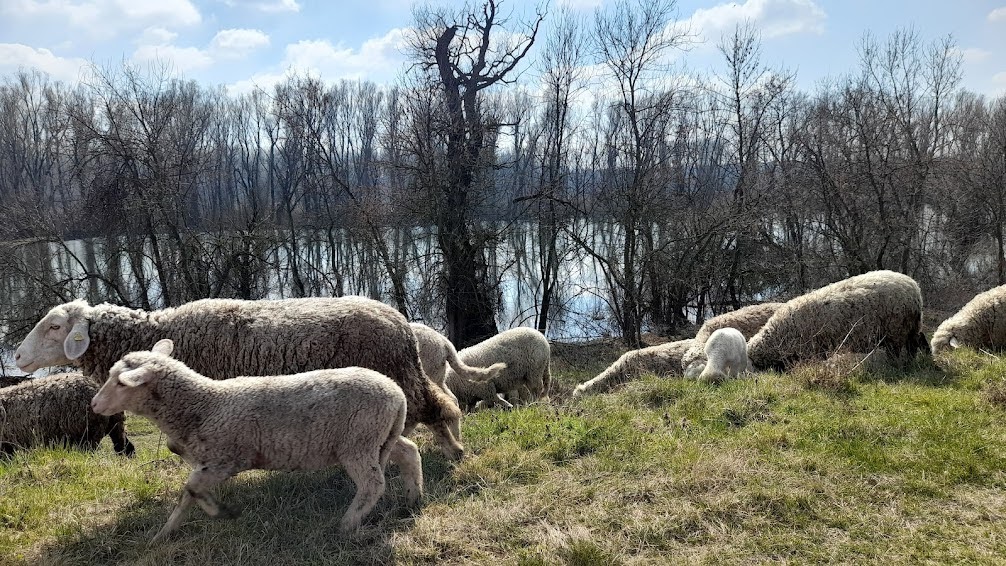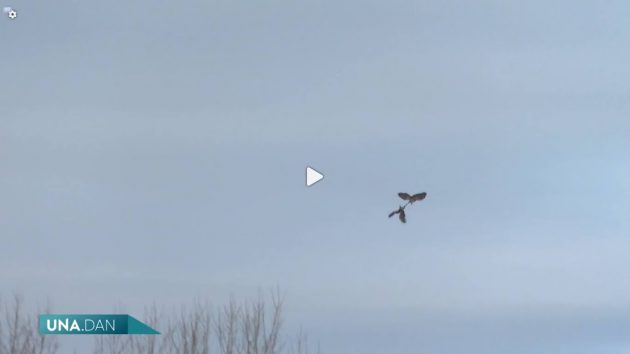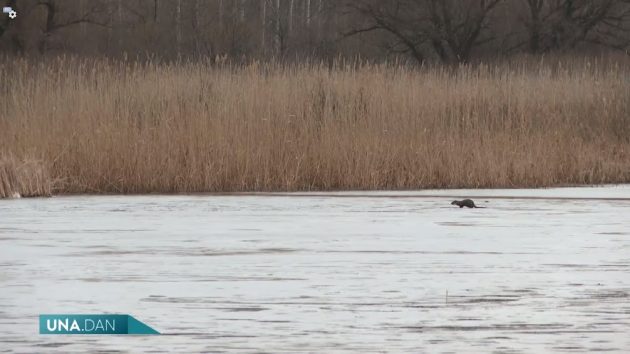
February is supposed to be that boring month coming after the hyperactive January, when the IWC takes place (non-American CBC). In the more normal years, I would spend January visiting the very best wildfowling spots along the Danube and seeing the best birds there are, so in February I would be well saturated with birds and feeling: Still winter? Gosh! When does it end??
Only, this year was far from normal (I live in the Balkans – what defines “normality” here?), and in the first days of January I caught Covid. Being vaccinated, it wasn’t too bad, but I stayed at home in isolation, missing all the action! At the end of the month my list stood at a ridiculous 45, instead of 100 or more.
Once it was over, in the last few days of January I visited Beljarica floodplain (cover photo), my local patch by the Danube in Belgrade, to find Meadow Pipits in bright breeding plumage, a young Northern Goshawk in low flight, perhaps 2 metres above the raft of ducks, which, seeing an inexperienced immature bird, ignored it totally, not even a nervous twitch to be seen, a few dozen Eurasian Wigeons, possibly the most handsome ducks around, and four White-tailed Eagles, two flying low over me, the second with a fish in its talons. Yet, there was a dark spook in the tree-crowns, a largish raptor, and I wasn’t ready!
My scope was still in my rucksack, and by the time I pulled it out, the spook was nowhere to be seen. I observed White-tailed Eagles likely a thousand times, and this didn’t strike me as the dark young bird. The next option would be a very dark adult Greater Spotted Eagle… but I wasn’t ready!
I usually forget about the World Wetland Day, 2nd of February, but this year I remembered. And used the opportunity to send an open letter to the City Mayor, enquiring about his still-unfulfilled promise of this particular area finally becoming protected. My letter was published at two distinguished media portals, and clearly attracted a lot of attention.
 Photo Una.World/rs
Photo Una.World/rs
The next patch to visit was the Reva Pond, farther down the Danube, to find the Black Woodpecker, 3 WT Eagles and a Eurasian Otter walking on ice, from one hole to another, diving for a short while and continuing farther. Trusting my instinct that in this kind of weather I can easily show this animal, a few days later I came back with a TV crew and… bingo! Five WT Eagles (including a pair in cartwheeling flight, at the beginning of this video; otters come later) and even three otters filmed, plus a chance to remind the audience of environmental problems and threats of annihilation this area is facing.
 Photo Una.World/rs
Photo Una.World/rs
I didn’t expect the Mayor to bother reading my open letter, let alone answering, but the elections are scheduled in two months and his PR did read it. A day later, there was an answer “by the Mayor”. Recognizing a heavy, bureaucratic vocabulary, I knew it was written by someone in the state nature protection bodies, which is even better (because that person would know what is s/he talking about), with the Mayor’s PR only adding the first paragraph where the Mayor claims how much he cares for the environment. Basically, the answer cleared that the protection of the wider Beljarica was upgraded from the city to the state and international level, and will, supposedly, be official soon. Which is good news.
Once upon a time, vast forests of Quercus robur, known as common oak, pedunculate oak, European oak or English oak, blanketed the Sava River floodplain, all the way from Croatia down to the river’s confluence in Belgrade. Jakovacki Kljuc, by the suburb of Surcin, is one of the smallest such forests remaining (160 ha / 400 ac), but also the one closest to Belgrade. And I decided to search it for the forest species: Eurasian Sparrowhawk, Syrian Woodpecker (okay, not truly a forest sp.), also had the pleasure of finding myself in the middle of a foraging party of Eurasian Blue, Great and Long-tailed Tits, Eurasian Blackbirds, European Robins, Hawfinches, European Greenfinches and no less than 20 Eurasian Siskins at 2 to 3 metres around my car. On my way back, a Merlin flies from one to the other side of a clearance.
And at the beginning of February, my list is still ridiculously low at 55 species.











Leave a Comment